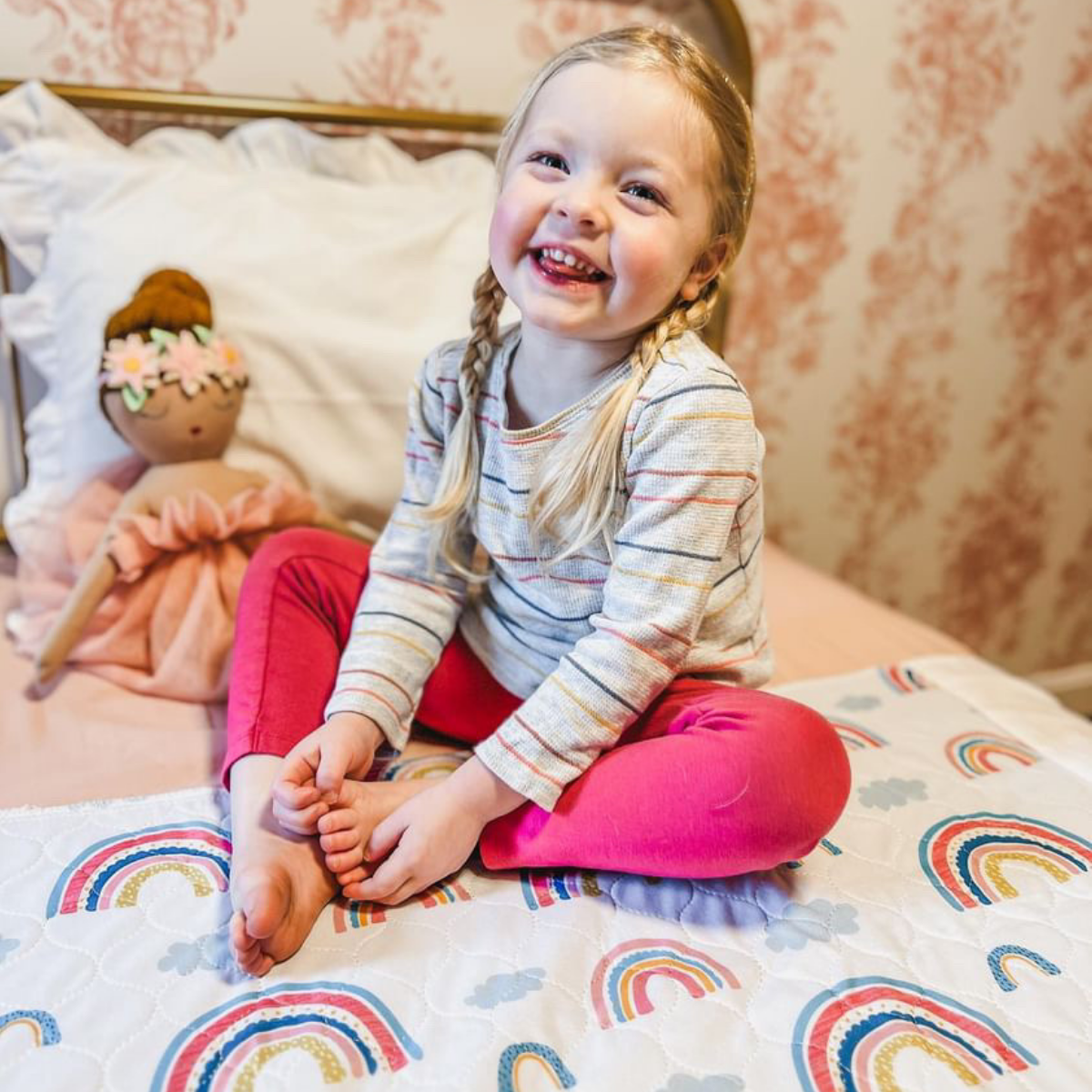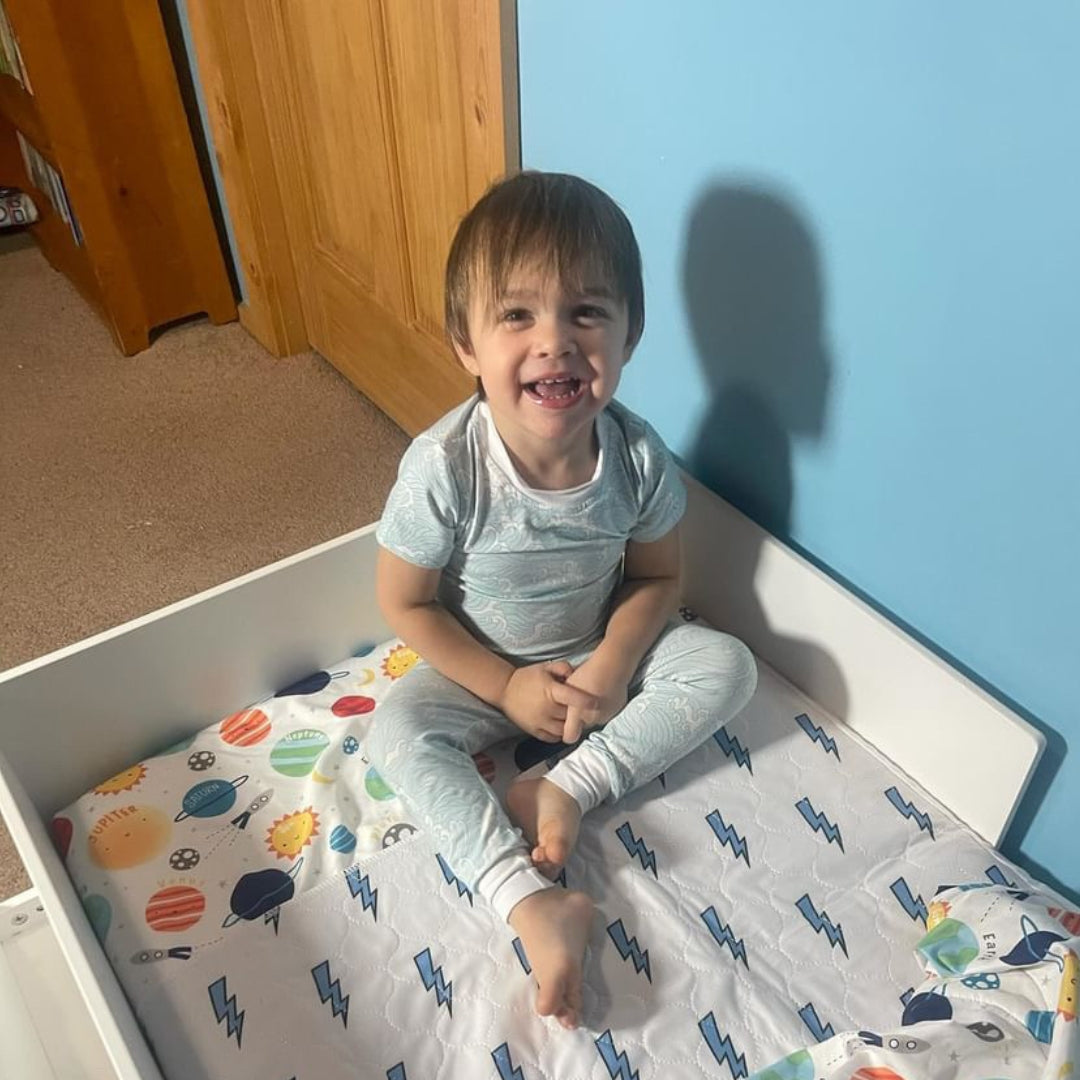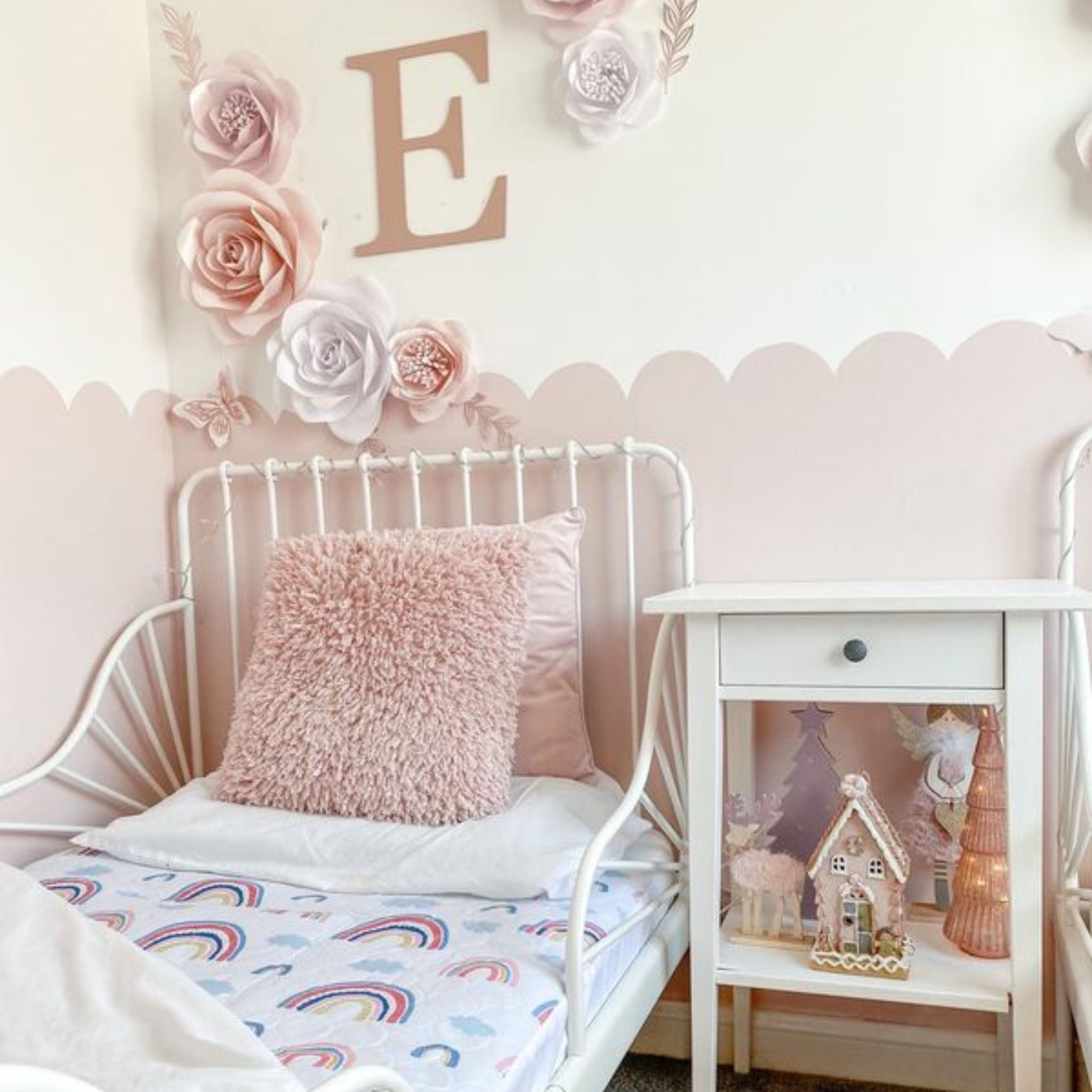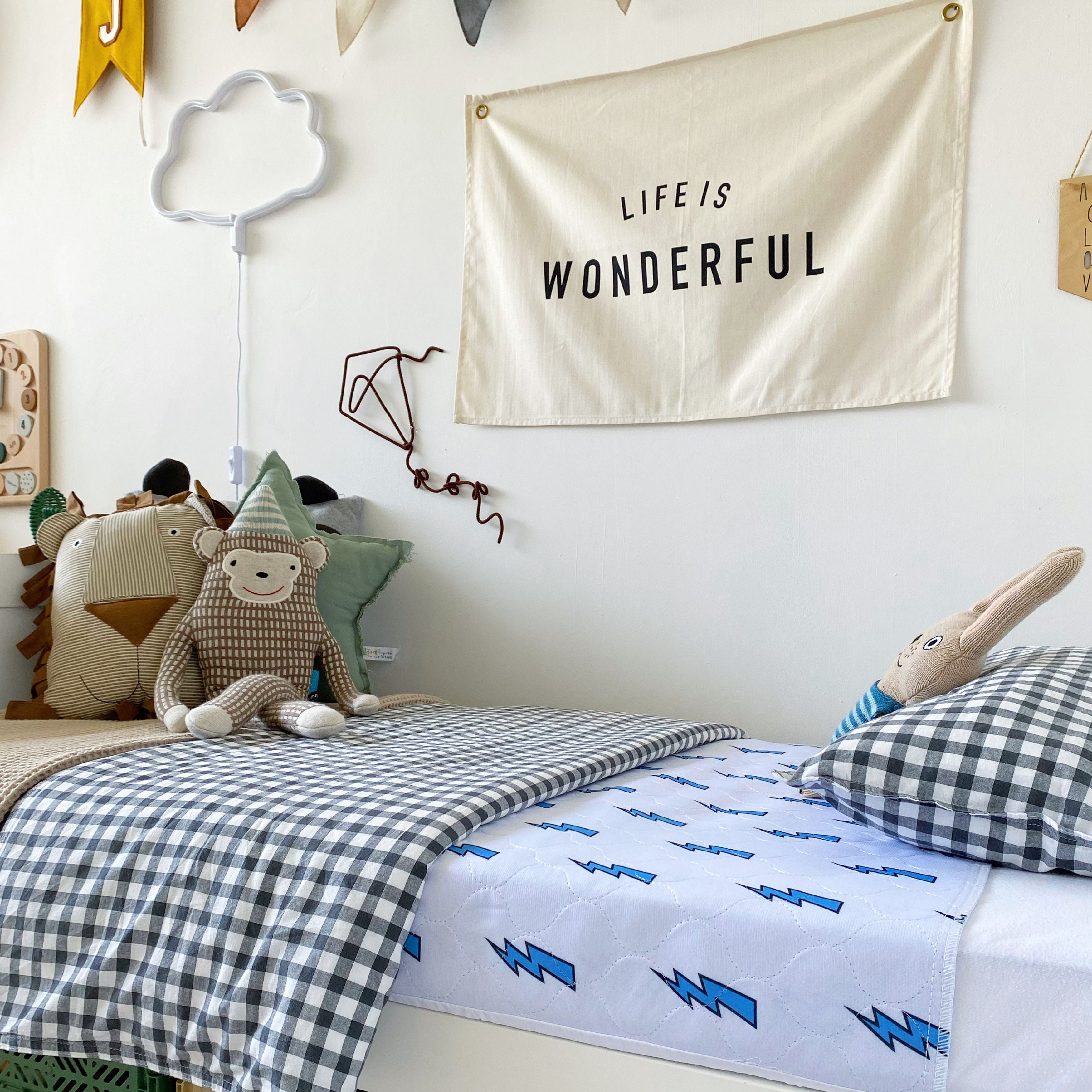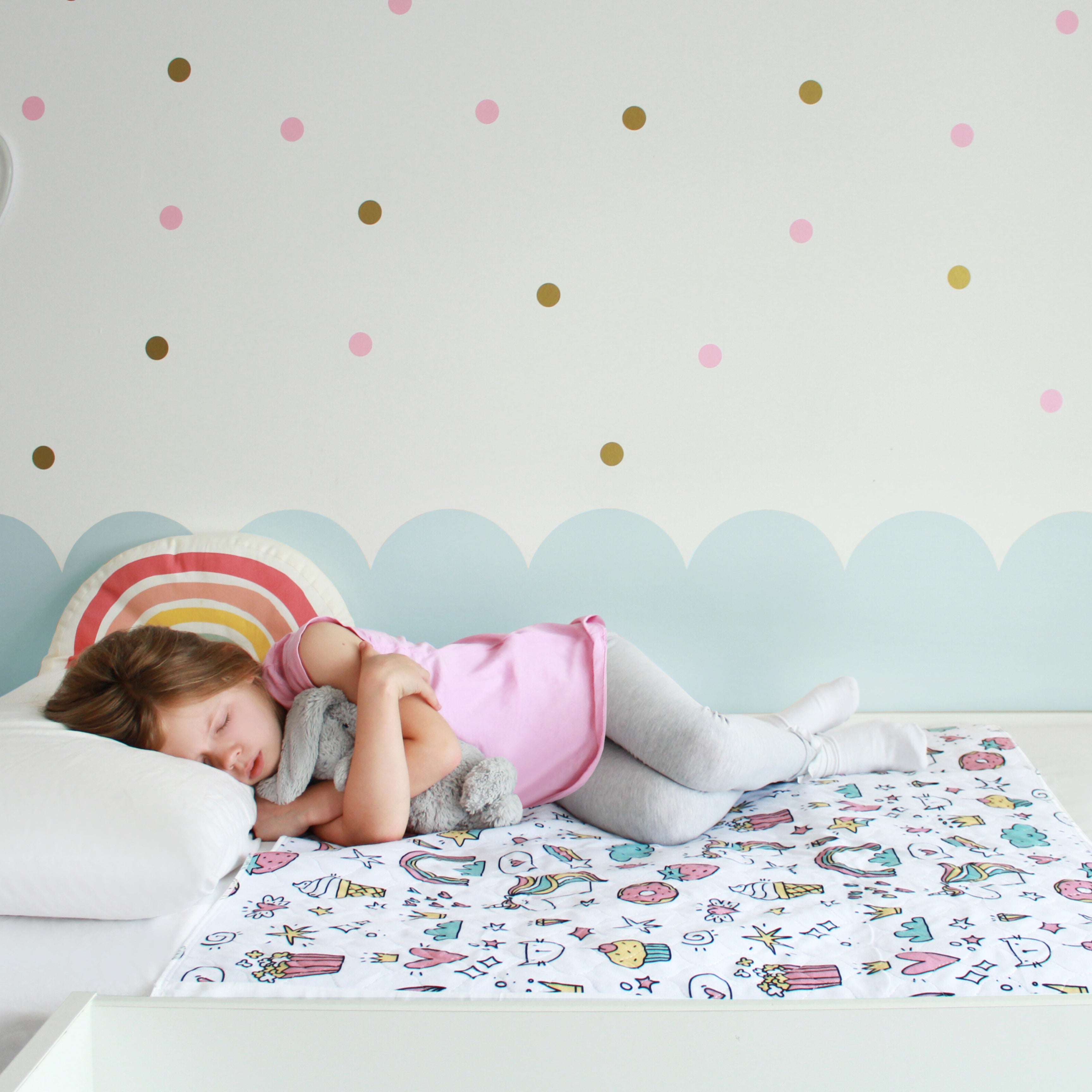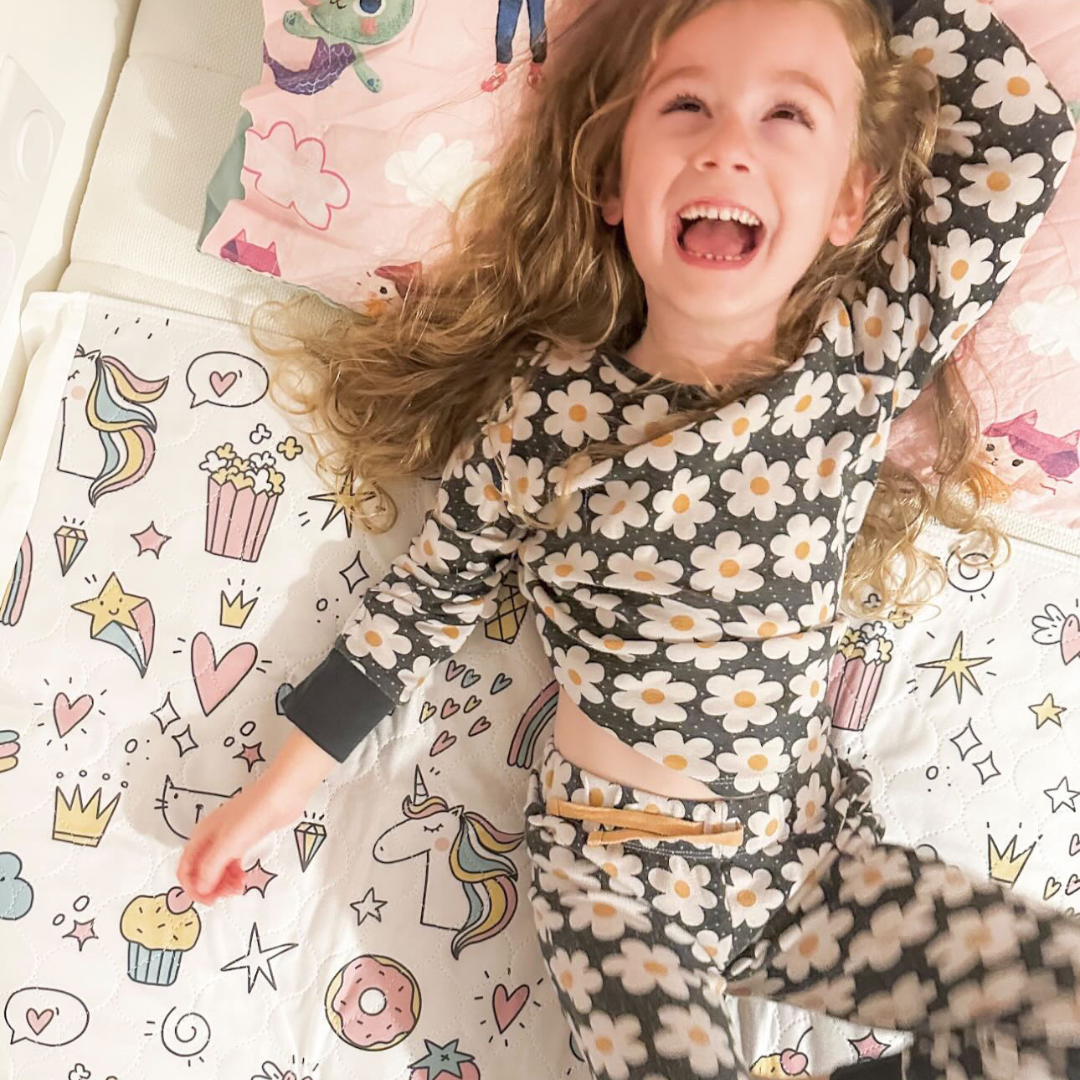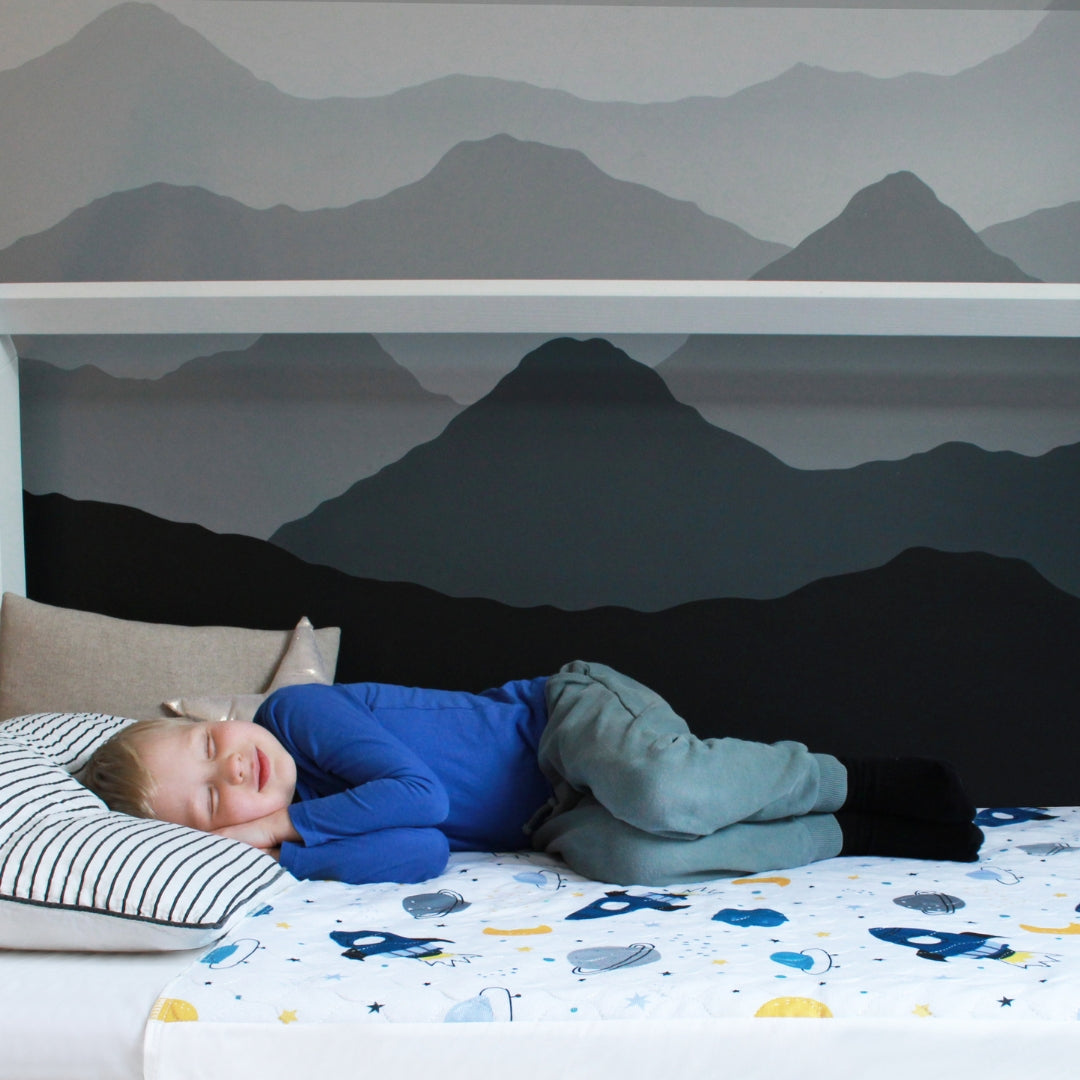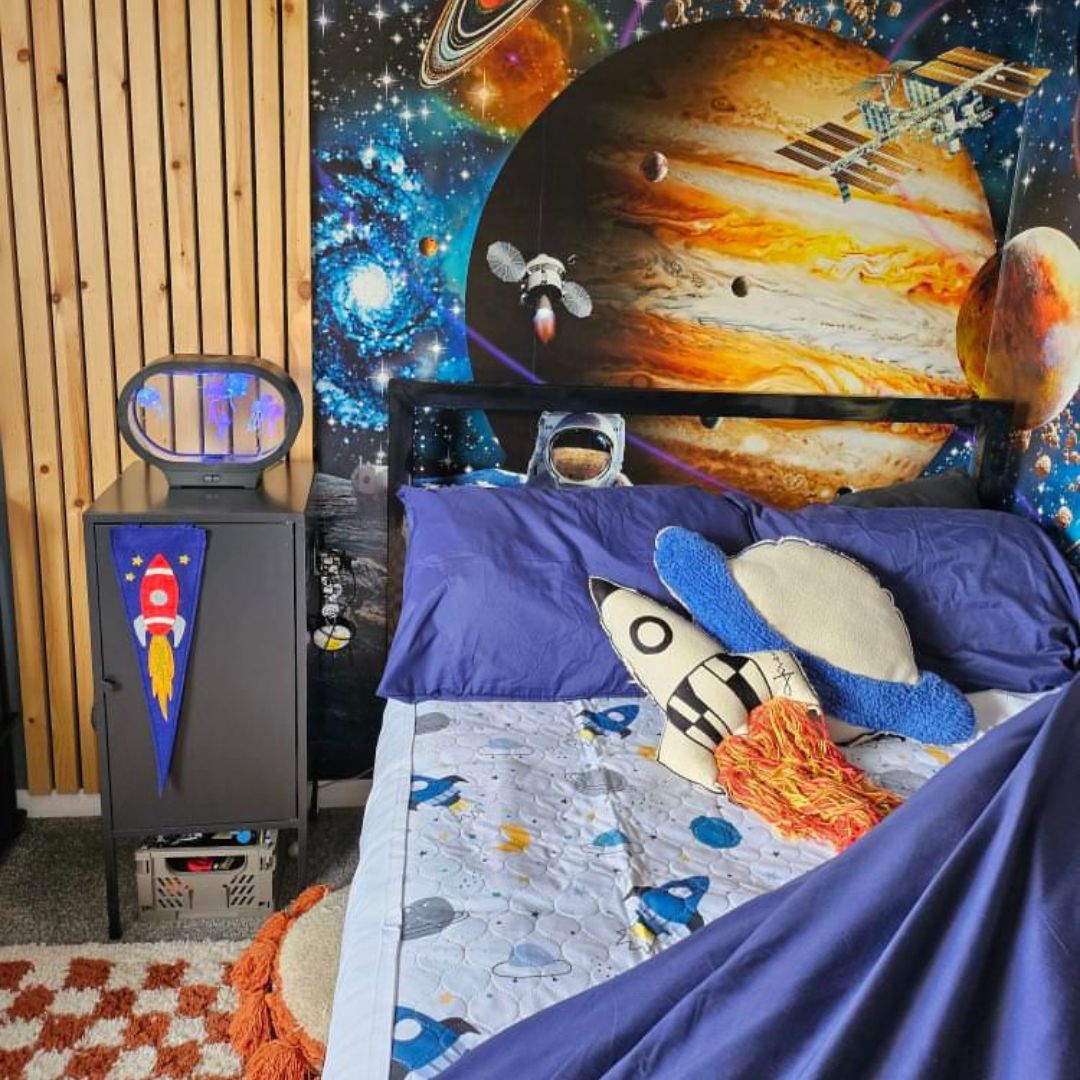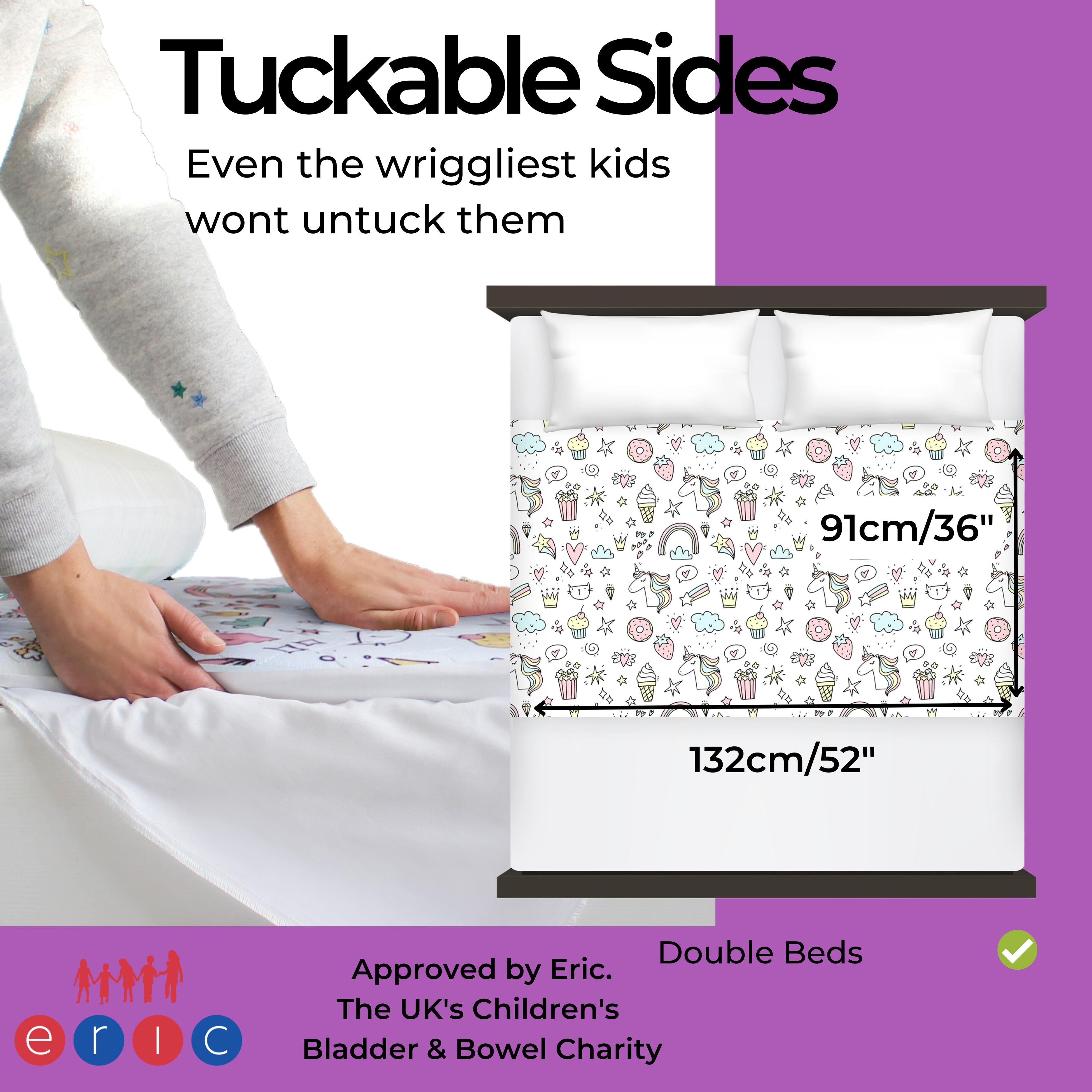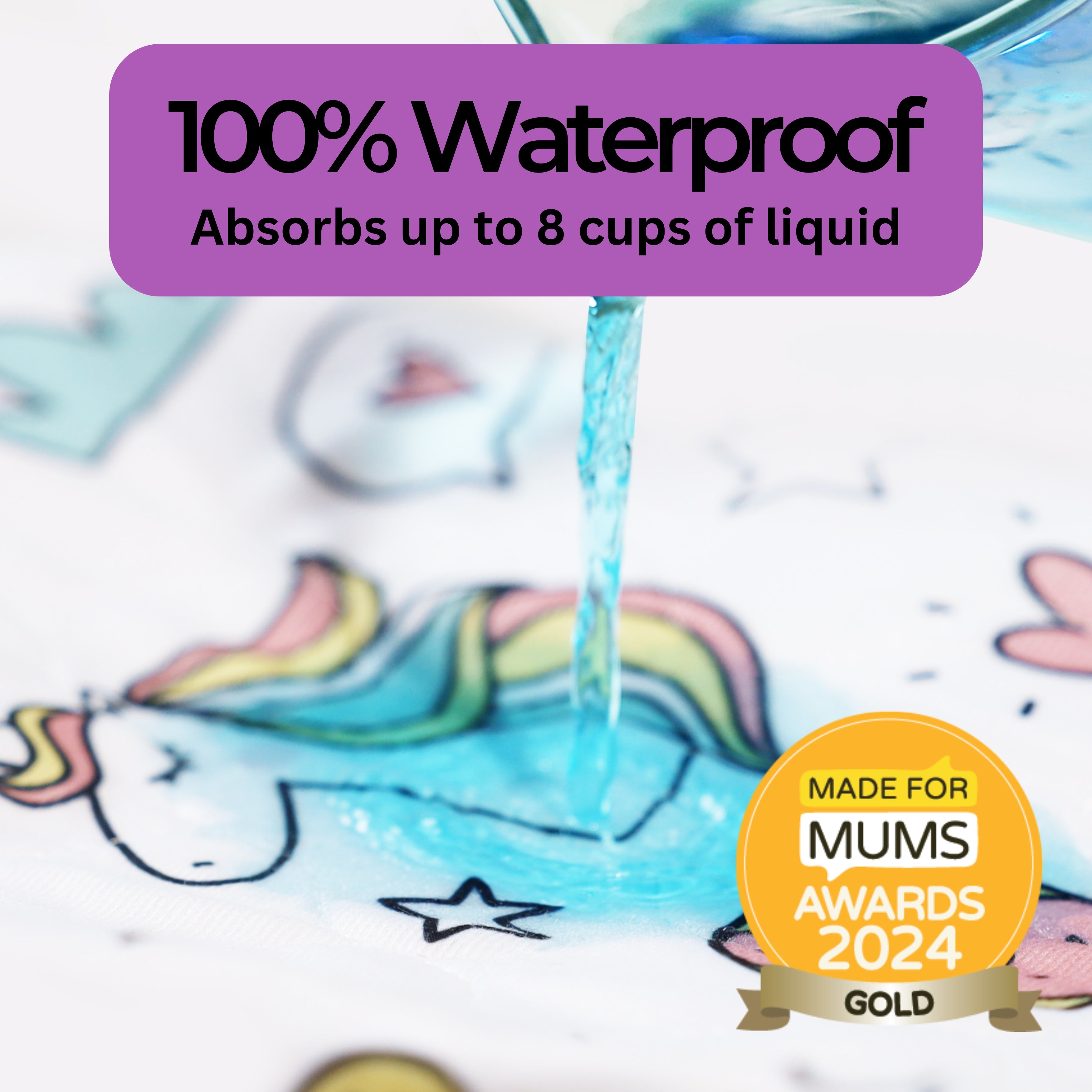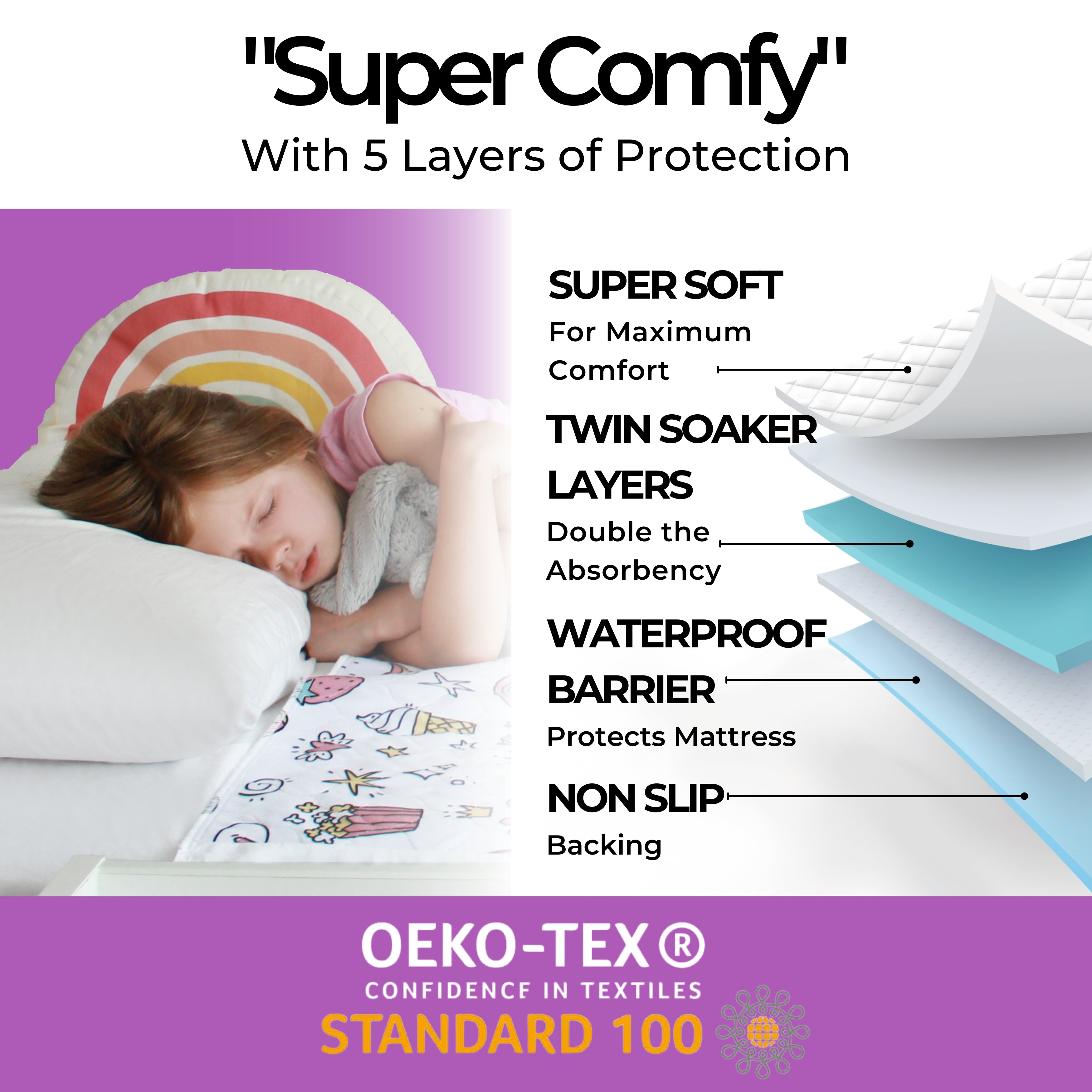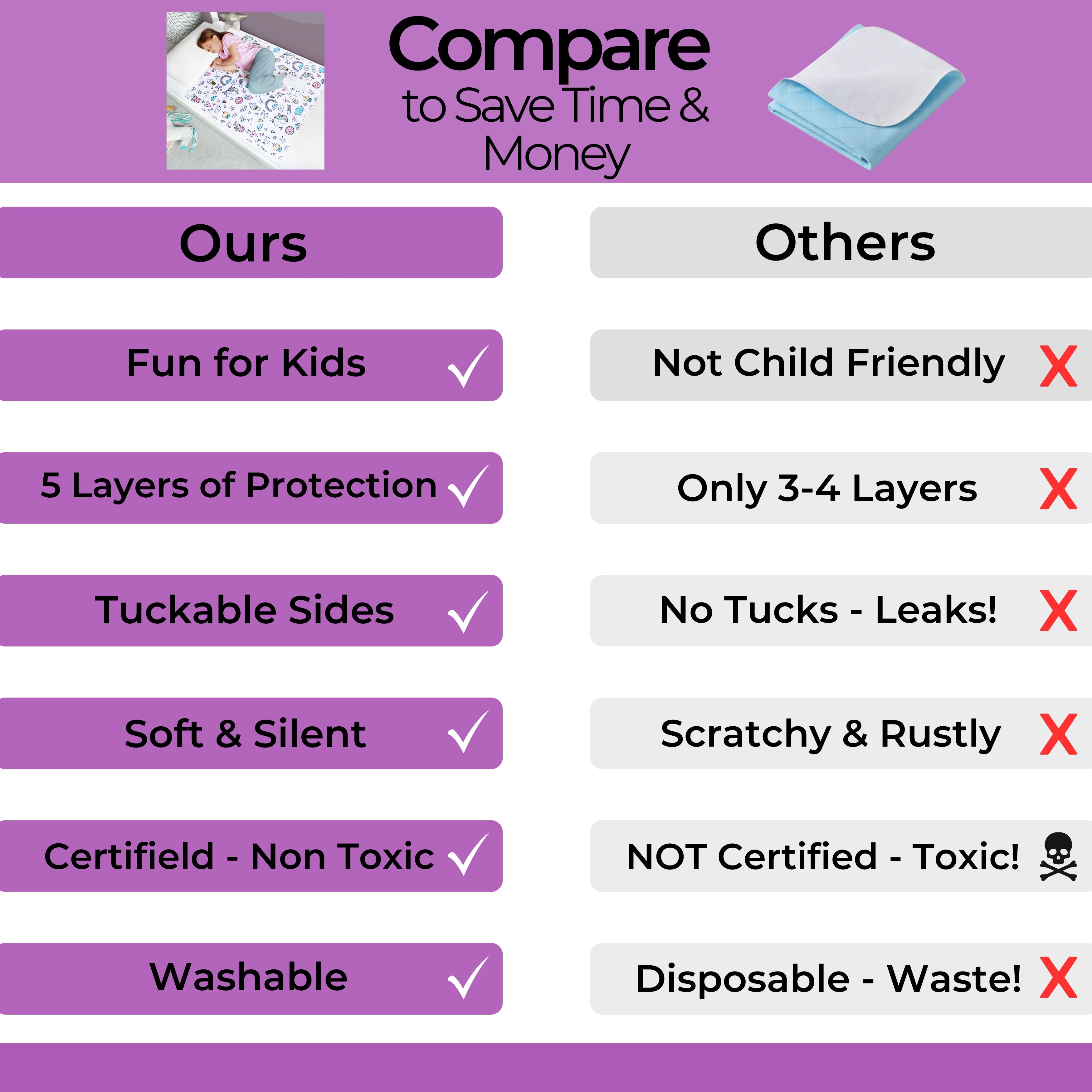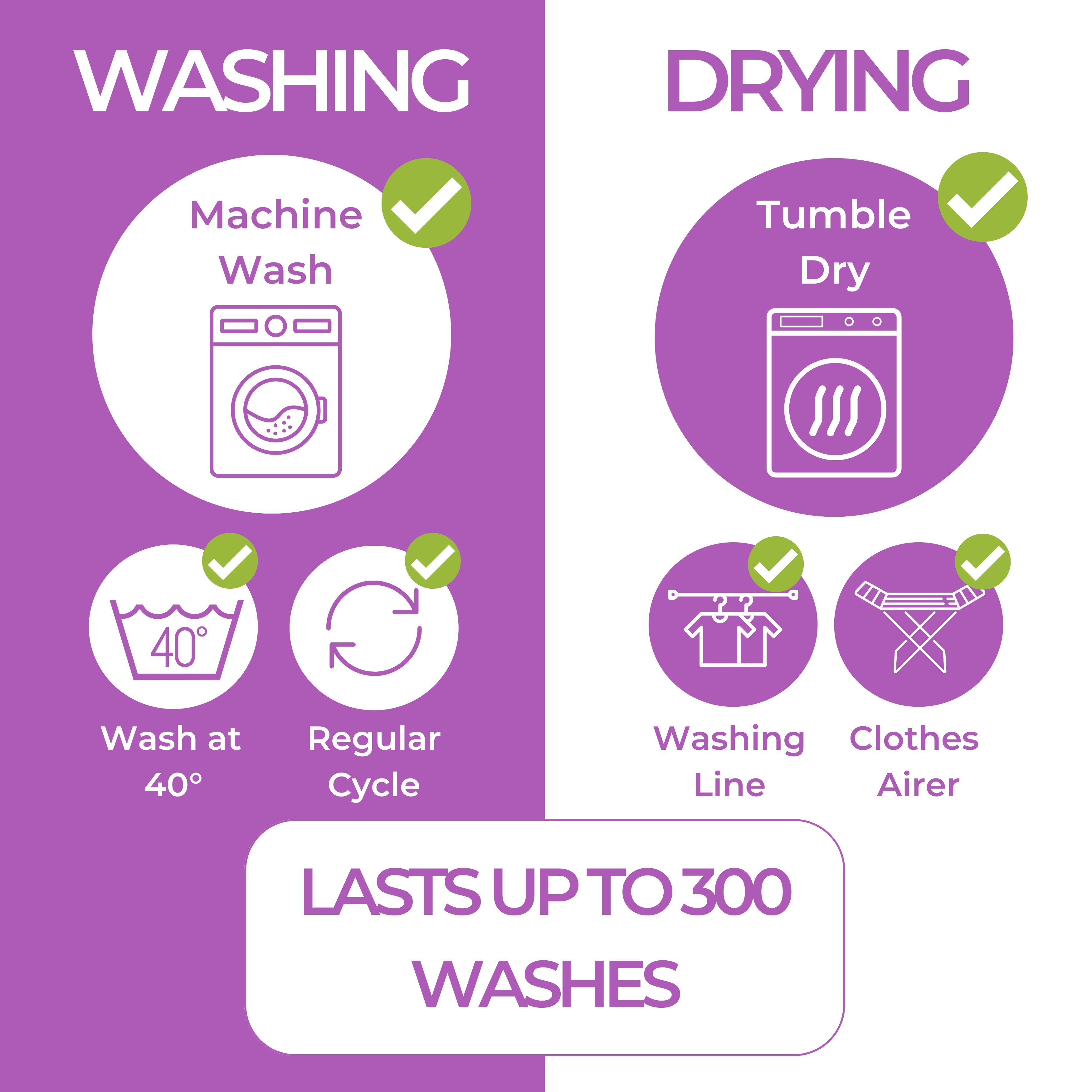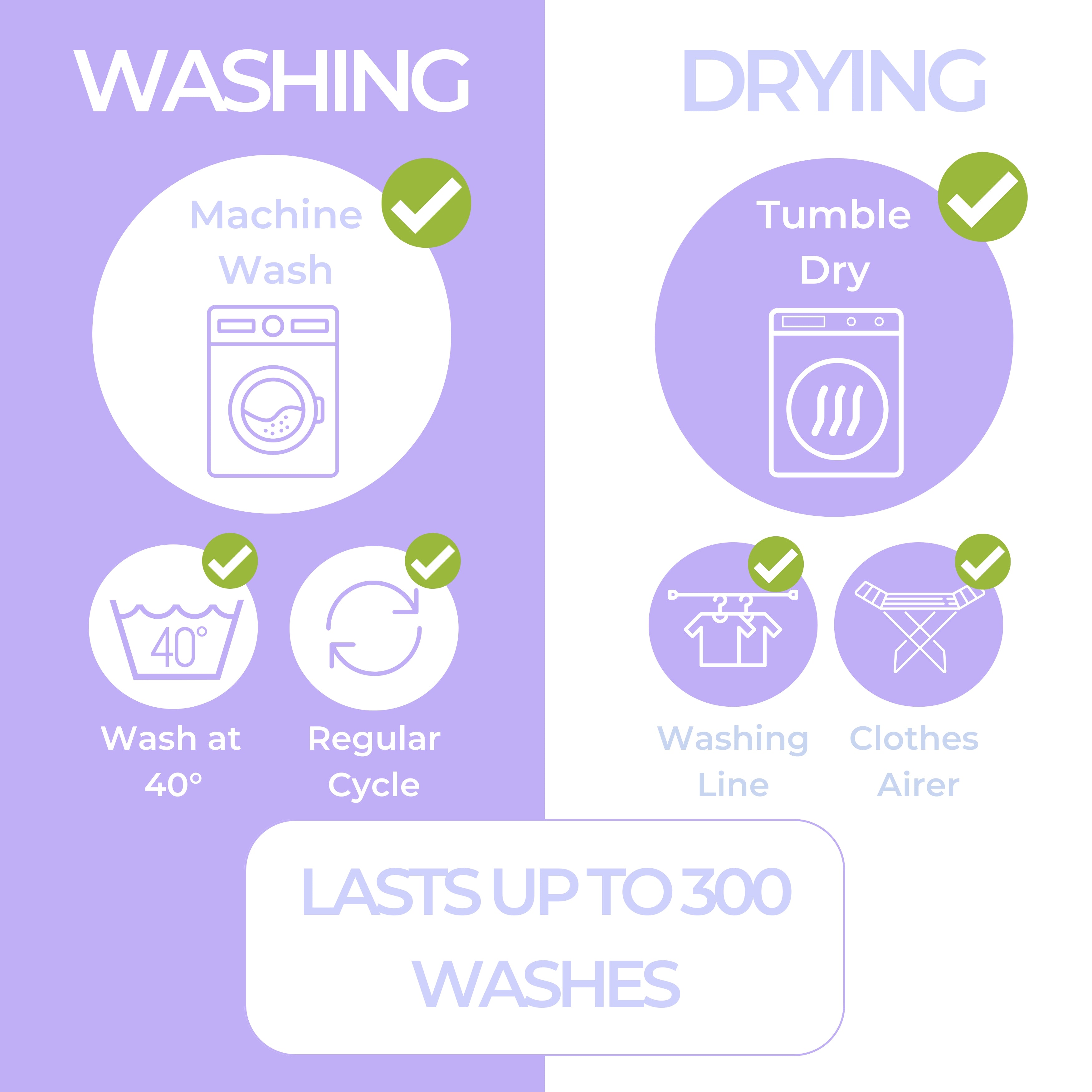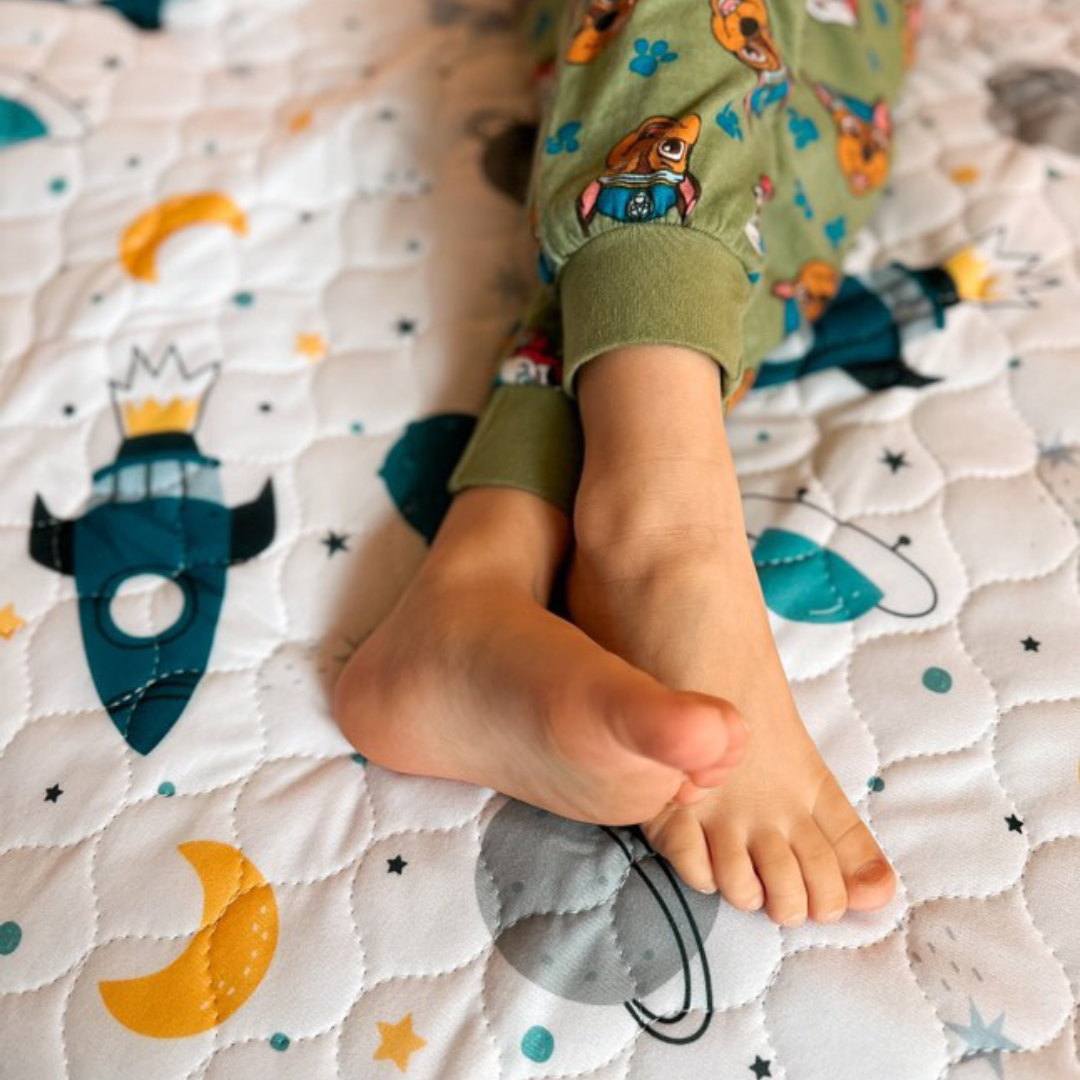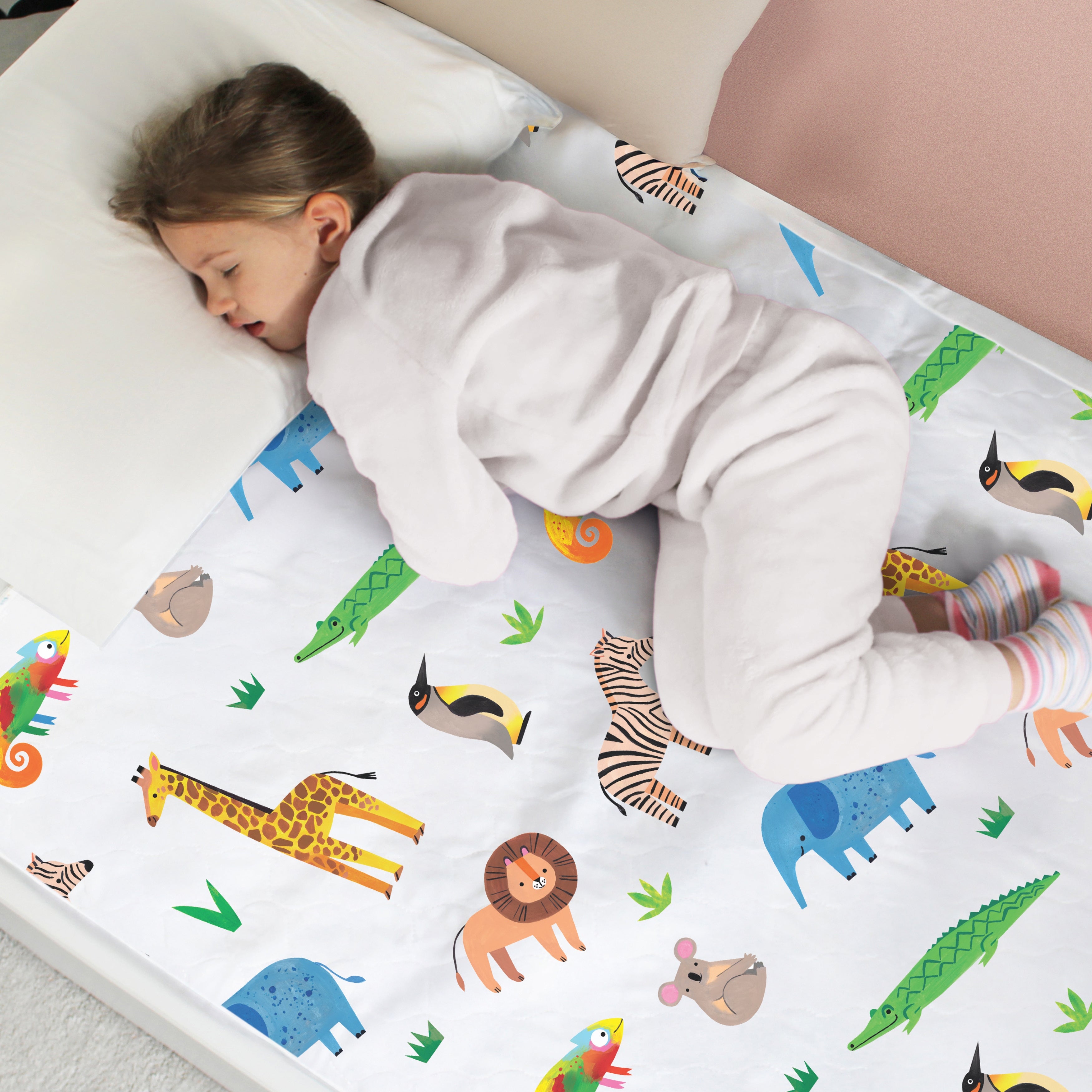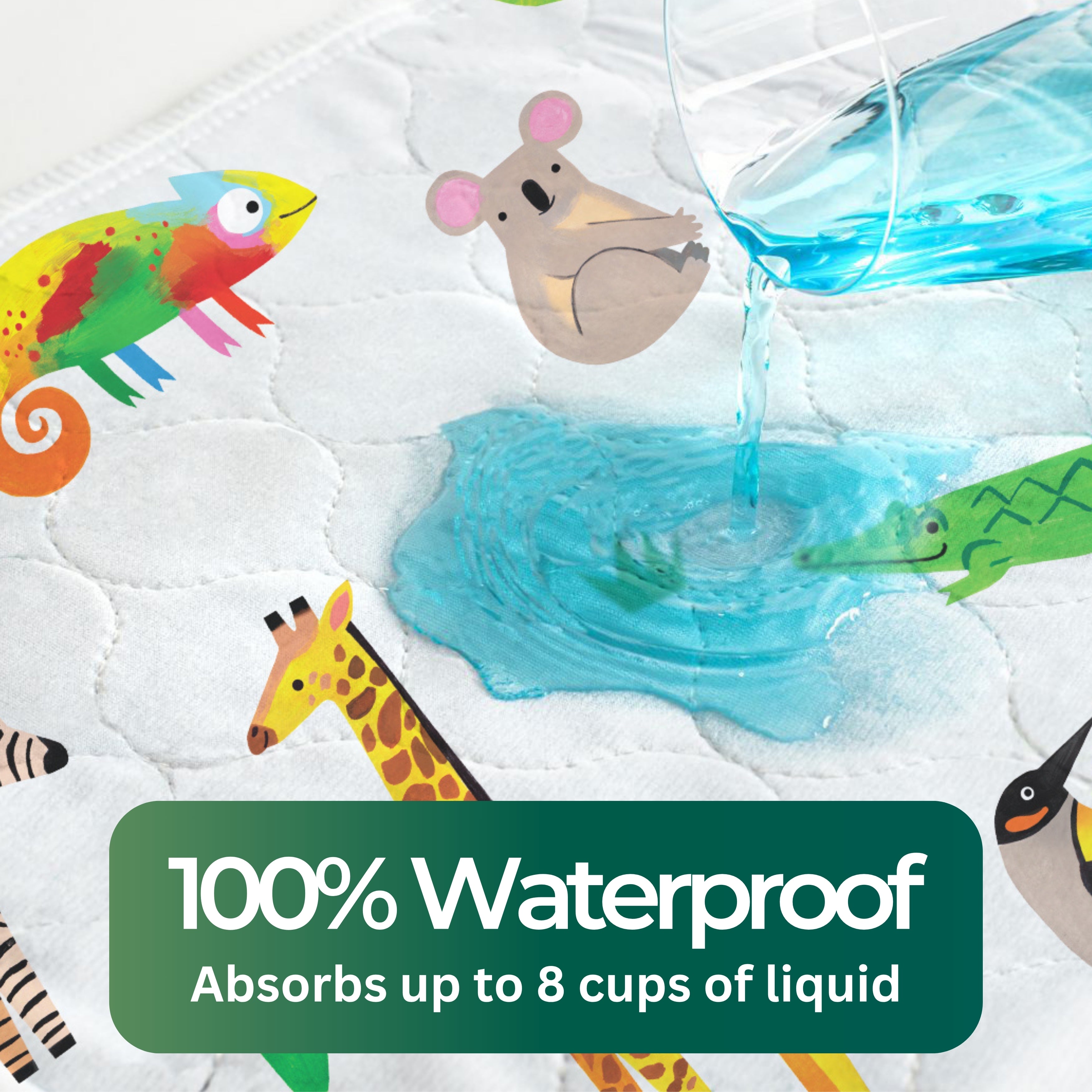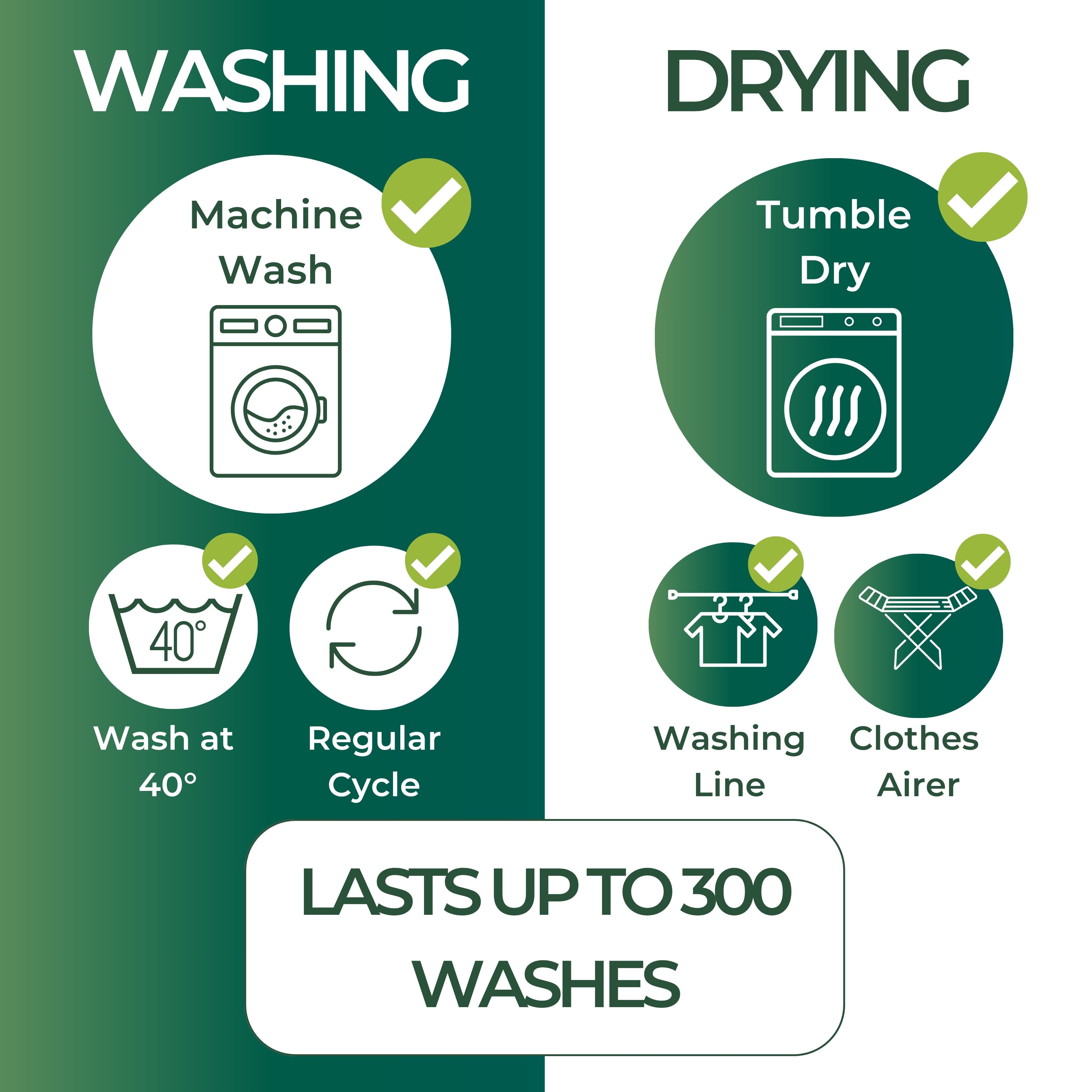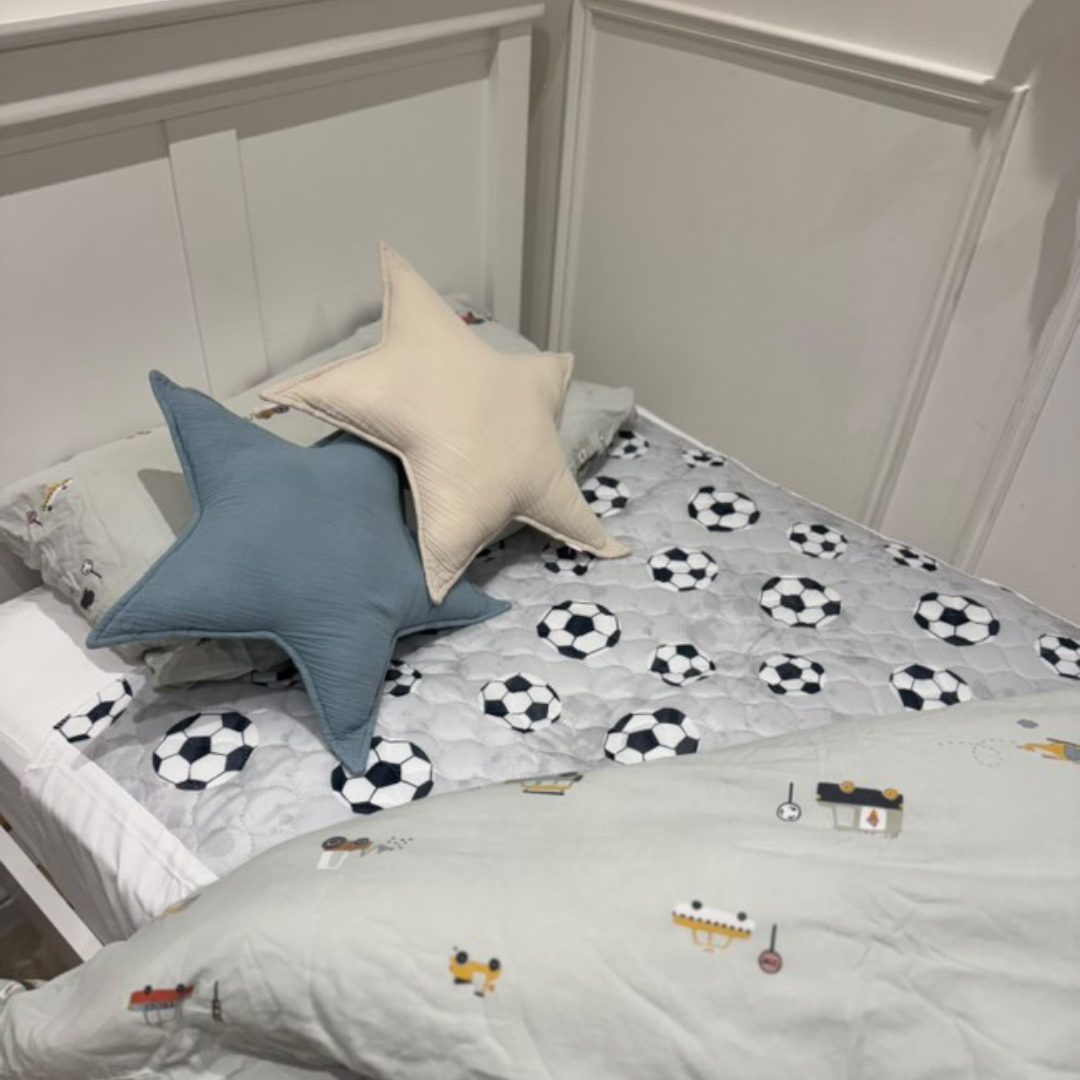When potty training your child overnight, accidents are inevitable. This often means waking up in the middle of the night to change the bed and launder wet sheets—disrupting both your sleep and your child’s. Not to mention, frequent accidents can be tough on your bed, mattress, and sheets. The good news is that there are ways to protect your child's bed (and yours when they sneak in during the night). Keep reading to find out how!
Use a Physical Barrier Like a Mattress Protector
Mattress protectors are essential during nighttime potty training and bedwetting. They provide a waterproof barrier that stops liquid from seeping into the mattress, preventing stains and odours. However, many parents don’t realise that different types of mattress protectors exist, each suited to various potty training needs.
Plastic Mattress Protectors
A plastic mattress protector sits directly on top of the mattress, with sheets layered over it. Also known as a waterproof sheet, this option ensures no liquid reaches the mattress, making cleanup easier. However, some parents find these protectors uncomfortable, as they can feel ‘plasticky’ and make noise when a child moves during sleep.
Washable Bed Pads
Another option is washable bed pads, which are smaller and sometimes come with tucks to secure them in place. These are a great alternative to traditional waterproof sheets, as they feature a waterproof bottom layer and a soft, comfortable fabric top layer.
At Hygge Sheets, we offer high-quality washable bed pads that make nighttime potty training easier. If an accident occurs, you can quickly remove and replace the pad without needing to change the entire bed—minimising sleep disruptions.
Many parents find layering a sheet and protector over another sheet and protector particularly helpful. This way, after an accident, you only need to remove the top layer, and the bed is instantly ready to go again!
Place a Potty in the Room and Use a Nightlight
Making it easy for your child to get up and use the toilet independently is key to successful nighttime potty training. Placing a potty in their bedroom means they won’t need to navigate a dark hallway to the bathroom. A nightlight in their room, hallway, or bathroom can also make them feel more confident about getting up in the night.
Some parents also opt for a Whizzer, a portable potty, to keep near the bed, especially in the early stages of potty training.
Train Your Child to Wake Up With a Bedwetting Alarm
If your child is over the age of 5 or 6 and bedwetting persists despite potty training efforts, a bedwetting alarm can be a useful tool. These alarms detect moisture and sound an alert to wake your child, helping them build the habit of waking up when they need to urinate. Over time, this can improve their ability to stay dry at night.
However, bedwetting alarms are not suitable for every child. They can be disruptive at first, so they should only be introduced when your child is old enough and ideally under the guidance of a healthcare professional.
Consult a Health Professional if Needed
Remember, bedwetting is a medical condition and not your child’s fault. Every child has their own timeline when it comes to nighttime potty training, and some may take longer to stay dry at night.
If you’ve tried these strategies and your child is still wetting the bed past the age of 5, consulting a healthcare professional can be beneficial. Bedwetting may be linked to underlying issues such as constipation, an overactive bladder, a urinary tract infection, hormone imbalances, or difficulty waking up.
Your healthcare provider may refer you to an enuresis (bedwetting) clinic or suggest medications like Desmopressin, which can be useful for nights away from home.
By using waterproof sheets, a potty or nightlight, and possibly a bedwetting alarm, you can make nighttime potty training easier while protecting your child’s bed. And if bedwetting persists, seeking medical advice can provide additional support.
Happy training!
Take care,
Catherine x

